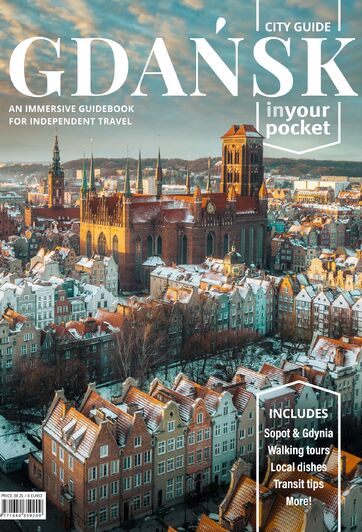Human settlement can be traced here over 2,500 years and a fort existed between the 7th and 11th centuries (see what to see).
13th century The first mention of the village of Sopot is recorded in a document outlining 16 settlements to be given to the Cistercian Monks in compensation for lands lost to the Knights of the Cross (Teutonic Knights). The Cistercians would remain owners of this land up until the abolition of monastic properties in the First Partition some 500 years later.
1466 As a result of the Second Peace of Torun, Sopot becomes part of the Polish state.
16th century Mid-way through the century a few rich Gdansk businessmen start to build summer manor houses here starting the city's transformation into a leisure resort.
1733-34 Sopot is seriously damaged by the Russians who occupy Gdansk. At the end of hostilities the summer manor houses were desolated and most remain empty for a number of years. In 1756-57 nine of the manor houses are purchased by General Jozef Przebendowski and a further two are later purchased by his widow giving the family 11 of the 15 manor houses in Sopot.
1772 As a result of the First Partition of Poland, Sopot becomes part of the Prussian state.
1804 The heirs of the Przebendowski fortune sell all of the Sopot manor houses to Gdansk businessman Carl Christoph Wegner.
1819 Wegner makes the first attempt to turn Sopot into a seaside resort by building a bath-house and changing rooms but the venture fails. At this time there are 23 houses in Sopot and a population of 350.
1823 Jean Georges Haffner, a doctor in Napoleon's army, starts the building of a seaside resort by building the Sopot Theraputic House, wooden baths and the beginnings of the pier.
1870 With the opening of a Gdansk - Koszalin train line, which is then extended to Berlin, Sopot becomes more accessible to holidaymakers. The town quickly grows into an elegant resort and records visitor numbers of nearly 12,500 people in 1900.
1877 The local government purchase the bathing houses from Haffner's heirs and build a second bathing house and extend the pier to 85 metres.
1901 The Kaiser Wilhelm II grants Sopot city rights on the 8th of October.
1914 In the days before WWI, the city has a population of 17,400 people and visitor numbers have reached 20,000 annually.
1920 As a result of the Treaty of Versailles, Sopot is incorporated into the Free City of Danzig. Sopot's northern border becomes the border between the Free City and the newly-born Polish state. The Therapeutic House is converted into a casino.
1928 The pier is extended to its current length of 512 metres and becomes the longest pier in Europe.
1939 With the outbreak of war, Polish residents of Sopot are rounded up and many flee the city.
1945 On March 23rd the Red Army enters Sopot and the German population is driven out, in some cases literally into the sea. Around 10% of the city is destroyed with some of the most serious damage in the baths/casino area.
1961 The first Sopot International Song Festival is held, a festival which goes onto to become a huge televised event in the Soviet bloc countries and still attracts big names every year.
1990 The first free elections after the fall of communism are held for the city council.
2009 The Spa House returns as part of the multi-million euro Centrum Haffnera development.


